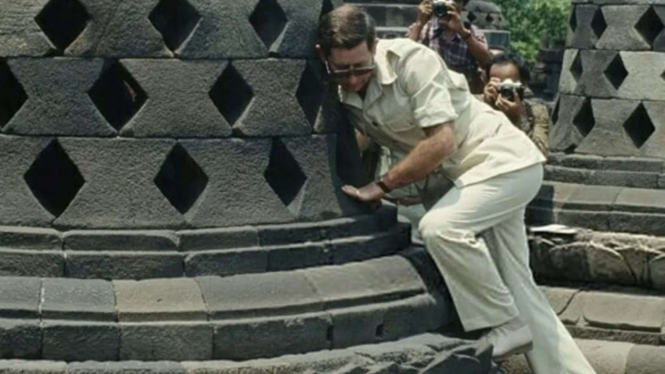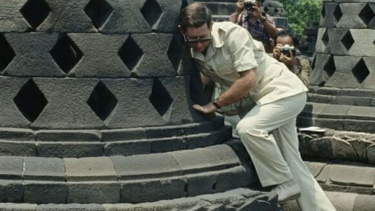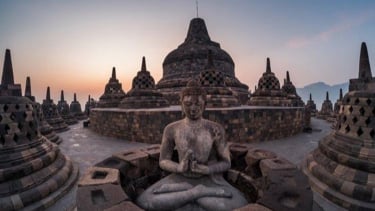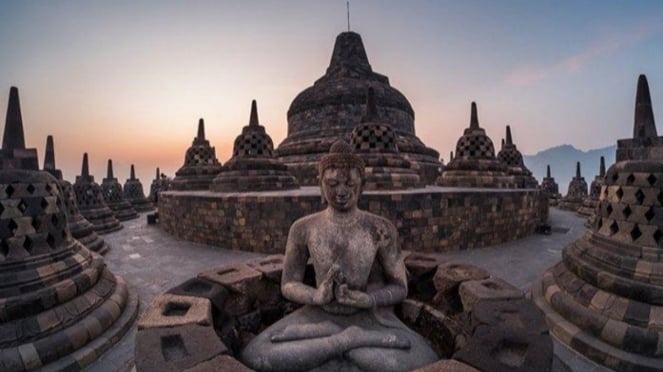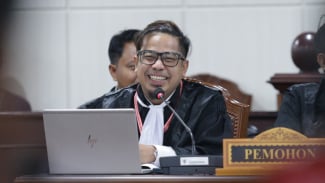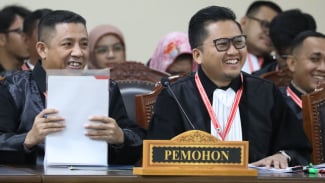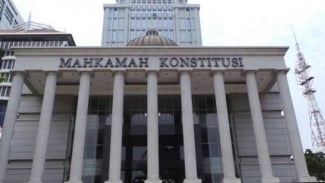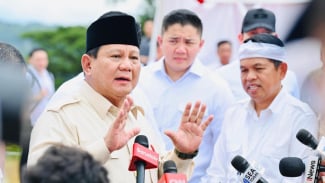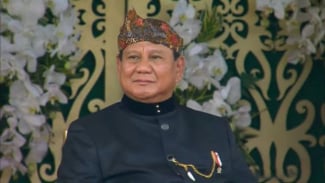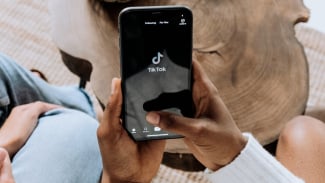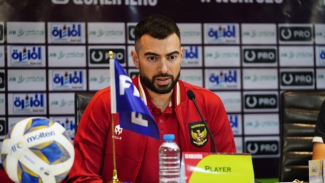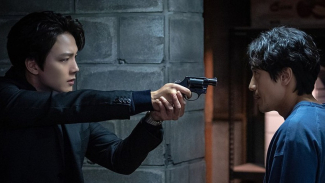Prince Charles Once Touched Buddha Statue of Borobudur Temple
- Instagram @seaheritagehistory
VIVA – Borobudur Temple is one of the seven wonders of the UNESCO world. The temple, which is located in Borobudur, Magelang, Central Java, Indonesia is the largest Buddhist monument in the world. Borobudur temple is also known to have high educational and religious values.
This temple is located approximately 100 km to the southwest of Semarang, 86 kilometers to the west of Surakarta, and 40 kilometers to the northwest of Yogyakarta.
Borobudur Temple has a unique and extraordinary beauty. One of its uniqueness is that there is a myth that says if people can touch the Buddha statue in the temple which is called Kunto Bimo, their dream will come true.
It turned out that the uniqueness and beauty of this historic site was able to attract the attention of the Crown Prince of Great Britain, namely Prince Charles.
In an Instagram upload belonging to the @seaheritagehistory, Charles, the Prince of Wales, grabbed the Buddha statue at the Borobudur temple. The photo was taken in 1989.
“INDONESIA | Charles, Prince of Wales, at Borobudur, 1989," wrote the caption of the photos.
The photos show that the crown prince of Great Britain is touching the Buddha statue which is often called Kunto Bimo.
“Charles, Prince of Wales, while visiting Borobudur in 1989. In the photo, The Prince of Wales reached into the Buddha statue in the temple which is often called Kunto Bimo.” Instagram account @seaheritagehistory account’s wrote.
Kunto Bimo is a myth that is believed by the people around the Borobudur which says that anyone who reaches into a hollow stupa and can touch certain parts of the body of the Buddha statue in it will get good luck or his wish will be granted.
Not just Charles, Prince of Wales. Apparently, ASEAN women finalists have tried to win "Kunto Bimo"
In 2005, the finalists of Puteri Asean also tried to win "Kunto Bimo".
Imelda Fransisca
- VIVA.co.id/Jeffry
The finalists included Mindy Ng Geok Boey (Singapore), Ei Yupa Win (Myanmar) and Panisa Chaikanarakkul (Thailand), Joselyn Lee Pek Wan (Malaysia), Nguyen Thao Huong (Vietnam), Jhezarie Javier (Philippines), Dayangku Farhana Pengiran Haji Bujang (Brunei) and Imelda Fransisca (Indonesia).
The history of the Borobudur temple is interesting too. In the past, Borobudur temple was built during the reign of the Syailendra dynasty. The construction of Borobudur Temple is predicted to take tens, even hundreds of years, until it was actually formed during the reign of King Samaratungga in 825.
However, no one has yet explained who the figure who built the Borobudur temple was. Because, at that time, Hinduism and Buddhism developed on the island of Java.
It is known that the Syailendra dynasty is an adherent of Mahayana Buddhism, while in the Borobudur area there are also Shiva sects of Hinduism.
Candi Borobudur
- U-Report
Archaeologists say, the construction of Borobudur Temple had undergone an overhaul up to four times.
At first, it was reported that the construction of Borobudur Temple began by leveling the land around the temple, then compacting the soil with stones and forming a pyramid structure.
The structure was later changed, because the area of ????the square and circular steps in the area was increased. After that, Borobudur Temple underwent the last changes to the circular steps and the size of the foundation was widened.
Borobudur Temple was covered in layers of soil and volcanic ash for centuries and overgrown with trees and shrubs, so that it just resembled a hill. It thought to be due to the eruption of Mount Merapi and the conversion of the population from Buddhism to Islam.
